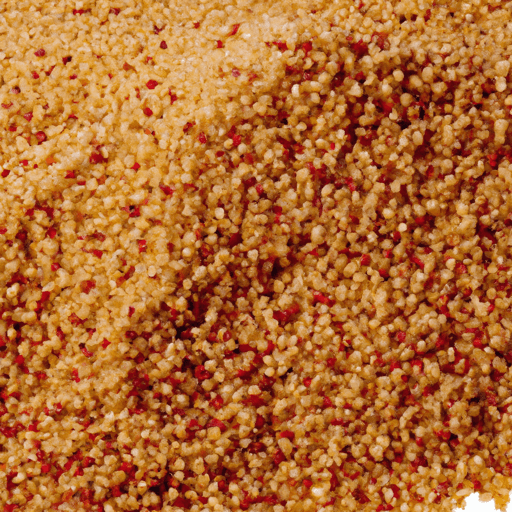Cooking with Amaranth: A Nutritious and Versatile Ingredient
Amaranth, a tiny yet mighty grain, has been cherished for centuries for its delightful taste, versatility in cooking, and incredible health benefits. Whether you’re a seasoned cook or just dipping your toes into the world of whole grains, amaranth deserves a spot in your pantry. In this article, we’ll delve into everything you need to know about cooking with amaranth, including its taste, common uses, nutritional value, and interesting history.
Taste and Texture
Amaranth possesses a subtly earthy and nutty flavor, making it a pleasant addition to both savory and sweet dishes. Its texture, once cooked, is slightly chewy, similar to quinoa or couscous. The grains are small in size and vary in color, including shades of golden yellow, pink, red, and black, adding a vibrant touch to any dish.
Common Uses in Cooking
Versatility is one of amaranth’s finest qualities. It can be incorporated into a wide range of culinary creations, adding depth and nutrition to meals. Here are some popular ways to use this tiny powerhouse:
1. Amaranth as a Side Dish
Cooked amaranth makes a delectable substitute for rice or couscous as a side dish. Pair it with savory stews, roasted vegetables, or grilled meats for a nourishing and satisfying meal.
2. Amaranth in Salads
Add a handful of cooked amaranth to your favorite salad for an extra dose of flavor and nutrition. Its texture creates a delightful contrast with crisp greens and crunchy vegetables. Drizzle with a tangy dressing, and you have a winning salad that will impress even the toughest food critics.
3. Amaranth in Baking
For those with a sweet tooth, amaranth can be ground into a flour and used in baking. Its nutty flavor adds a unique touch to bread, muffins, cookies, and cakes. Experiment by combining it with other gluten-free flours like almond flour or buckwheat flour for delightful and wholesome treats.
4. Amaranth as a Breakfast Staple
Start your day off right by incorporating amaranth into your morning routine. Cook it with milk or water and top it with your favorite fruits, honey, nuts, or seeds. This creamy and nourishing breakfast porridge will keep you energized throughout the day.
Nutritional Value
Apart from its culinary versatility, amaranth boasts an impressive nutritional profile. Packed with essential vitamins, minerals, and antioxidants, it offers numerous health benefits. Here are some key nutrients found in amaranth:
- Protein: Amaranth is considered a complete protein, containing all nine essential amino acids required by the human body. This makes it an excellent choice for vegetarian and vegan diets.
- Fiber: High in dietary fiber, amaranth supports healthy digestion, prevents constipation, and aids in weight management.
- Minerals: It is rich in minerals such as calcium, iron, magnesium, and phosphorus, which contribute to bone health, blood circulation, and overall well-being.
- Vitamins: Amaranth contains B vitamins, including folate and riboflavin, involved in energy production and maintaining a healthy nervous system.
History and Interesting Facts
Amaranth has a rich history dating back thousands of years. It was a staple crop for the Aztecs and other Mesoamerican civilizations, celebrated for its ceremonial and nutritional significance. When the Spanish conquistadors arrived in the Americas, they banned the cultivation of amaranth due to its association with indigenous rituals. Despite this setback, amaranth managed to survive in remote regions and has experienced a modern-day resurgence due to its outstanding nutritional properties.
Fun fact: The name “amaranth” is derived from the Greek word “amarantos,” which means “unfading” or “immortal.” This name perfectly suits the grain, as it has proven to be resilient and maintain its popularity throughout the ages.
Conclusion
Cooking with amaranth opens up a world of culinary possibilities while providing a wealth of nutritional benefits. Its delicate nutty flavor, versatility in different dishes, and impressive nutrient profile make it a fantastic addition to any kitchen. Whether you’re seeking a healthy alternative to rice or a delightful twist in your baked goods, amaranth is sure to inspire your creativity and nourish your body. Embrace this tiny grain and embark on a culinary adventure that will leave you amazed.
Cooked Amaranth
Origin: Amaranth is an ancient grain that has been cultivated for thousands of years. It is believed to have originated in South America, specifically the Andean region. It was an important staple crop for the Aztecs and Incas.
Common uses: Cooked amaranth can be used in various ways. It has a slightly nutty and earthy flavor that complements both sweet and savory dishes. It can be enjoyed as a hot breakfast cereal, added to soups or stews for thickening, used as a rice substitute, or even incorporated into baked goods like bread or muffins.
Nutritional benefits: Amaranth is highly nutritious and is considered a pseudo-cereal, meaning it is consumed like a grain but is not classified as one botanically. It is naturally gluten-free and provides a good source of protein, dietary fiber, and several essential nutrients including iron, magnesium, phosphorus, and potassium. It is also rich in antioxidants and contains beneficial plant compounds like squalene and lunasin.
Unique properties: One unique property of cooked amaranth is its gelatinous texture, similar to that of cooked oatmeal. This texture makes it a suitable ingredient for dishes that require thickening. Additionally, amaranth is known for its high protein content compared to other grains, making it a valuable option for those following a plant-based diet.
Historical significance: Amaranth holds cultural and religious significance in various ancient civilizations. The Aztecs used amaranth during religious ceremonies and celebrations, and it was closely associated with the Aztec god of agriculture. However, when the Spanish conquistadors arrived, they banned the cultivation of amaranth due to its association with indigenous religious practices. Despite this setback, amaranth has experienced a revival in recent times and is now recognized for its nutritional value.




Use the share button below if you liked it.
It makes me smile, when I see it.